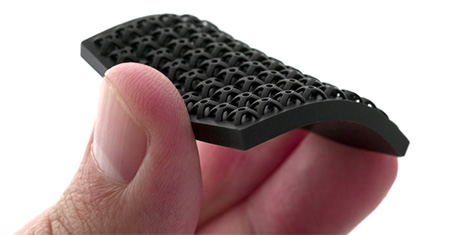
With an aim goal of killing off prototyping and jumping straight into production-quality parts, Carbon has made fast progress not only with its hardware, but also with a new range of accompanying proprietary software for designers.
The latest announcement is of its new tools for applying textures to 3D printed part surfaces, where traditional injection moulded methods such as costly and complex mould etching treatments or laborious post-processing on the part itself present problems.
Carbon’s proprietary software aims to give production quality surface finish and resolution on difficult-to-tool low-angle textures, as well as textures with undercuts, pushing the limits of the role textures can play in product design, expanding textures from simple aesthetics to new capabilities driven by the engineering of complex geometries.


These engineered functional surfaces also open the door to new applications other than aesthetic patterning, adding interesting uses in areas such as biomimicry, hydrophobicity, friction control, and flow control.
The technology also adds benefits for designers and design review, where textures are typically added at the very end of the product development cycle, with the benefits of 3D printing, any iteration or modification can be quickly changed without additional costs or interruption.






